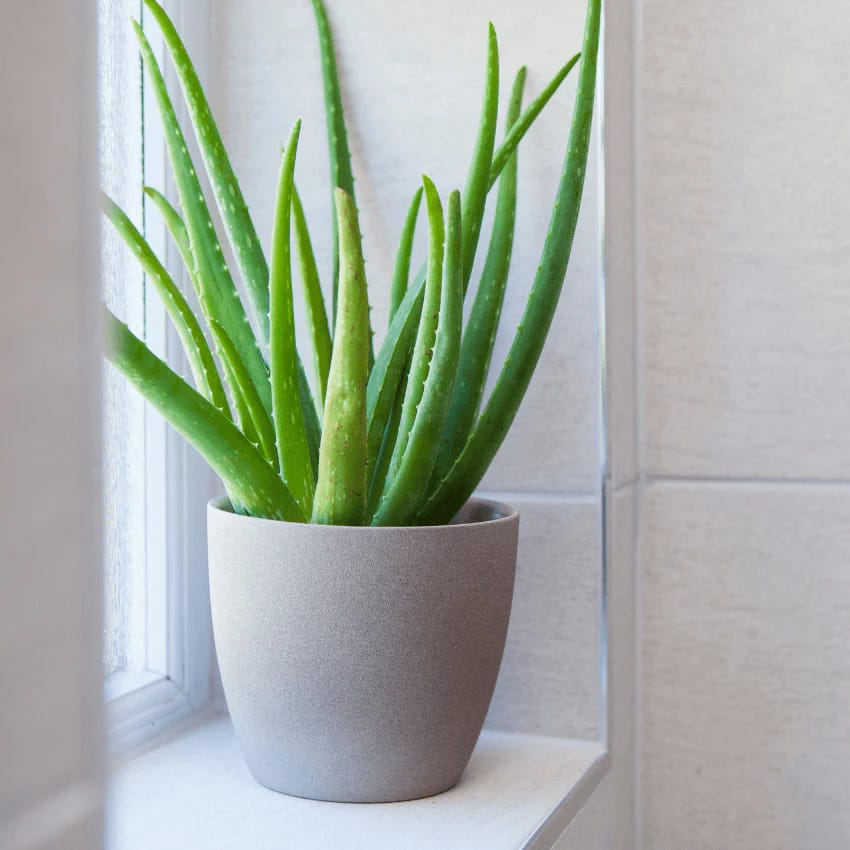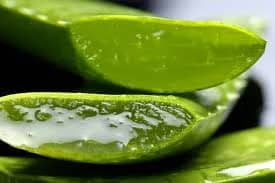Aloe Vera is a popular succulent known for its medicinal properties and low maintenance requirements. It is a great addition to any indoor garden due to its attractive, fleshy leaves and ability to thrive in various conditions. This guide will help you understand everything you need to know about growing and caring for Aloe Vera plants.
Description
Aloe Vera (Aloe barbadensis miller) is a succulent plant with thick, green, fleshy leaves that fan out from a central stem. The leaves contain a clear gel that is widely used for its soothing and healing properties, particularly for burns, cuts, and skin conditions.
Benefits of Aloe Vera
- Medicinal Uses: Aloe Vera gel is renowned for its anti-inflammatory, antimicrobial, and wound-healing properties.
- Air Purification: Aloe Vera helps improve indoor air quality by removing toxins.
- Aesthetic Appeal: Its unique, spiky leaves add a touch of greenery to any indoor space.
How to Plant Aloe Vera
Light Requirements
Aloe Vera thrives in bright, indirect sunlight. It can also tolerate some direct sunlight, but prolonged exposure can cause the leaves to turn brown.
Soil Requirements
Use a well-draining succulent or cactus potting mix. If you want make your own then mixing regular potting soil with sand or perlite.
Planting Steps
- Choose a Pot: Select a pot with drainage holes to prevent water from accumulating at the bottom.
- Prepare the Soil: Fill the pot with the well-draining potting mix.
- Planting: Place the plant in the pot, ensuring that the roots are covered with soil, but the base of the leaves is not buried.
How to Care
Watering
- Frequency: Water your plant every 2-3 weeks, allowing the soil to dry out completely between waterings.
- Method: Water the soil directly, avoiding the leaves to prevent rot.
Temperature and Humidity
- Temperature: Aloe Vera prefers temperatures between 55°F (13°C) and 80°F (27°C).
- Humidity: It can tolerate low humidity levels, making it suitable for indoor environments.
Fertilizing
- Frequency: Fertilize sparingly, about once a year in the spring.
- Type: Apply a balanced, water-soluble fertilizer diluted to half strength.
Plant Diseases and Solutions
Common Issues
- Root Rot: Caused by overwatering. And proper drainage with reduce watering frequency.
- Leaf Spots: Usually a result of fungal infections. Remove affected leaves and mainten air circulation.
Pests
- Aphids and Mealybugs: Address infestations using insecticidal soap or neem oil.
Propagating
Offsets (Pups)
Medicinal Aloe plants produce offsets, or “pups,” which can be separated from the mother plant and potted individually.
- Remove the Pups: Gently remove the pup from the mother plant, ensuring it has some roots attached.
- Plant the Pups: Plant the pup in a small pot with draining soil and water sparingly.

Medicinal Aloe Gel Extraction
Harvesting
- Select a Mature Leaf: Choose a thick, healthy leaf from the outer section of the plant.
- Cut the Leaf: Use a sharp knife to cut the leaf close to the base.
- Drain the Resin: Allow the yellow resin to drain from the cut leaf before extracting the gel.
Extracting the Gel
- Peel the Leaf: Use a knife to remove the thick outer skin.
- Scoop Out the Gel: Use a spoon to scoop out the clear gel inside.
Plant Smell
Medicinal Aloe does not have a noticeable smell, making it an ideal plant for indoor spaces without overpowering fragrances.
Types of Aloe Vera
There are over 500 species of Aloe, but Aloe barbadensis miller is the most common variety used for medicinal purposes.
Synonyms
Aloe Vera is also known as “True Aloe” or “Medicinal Aloe.”

